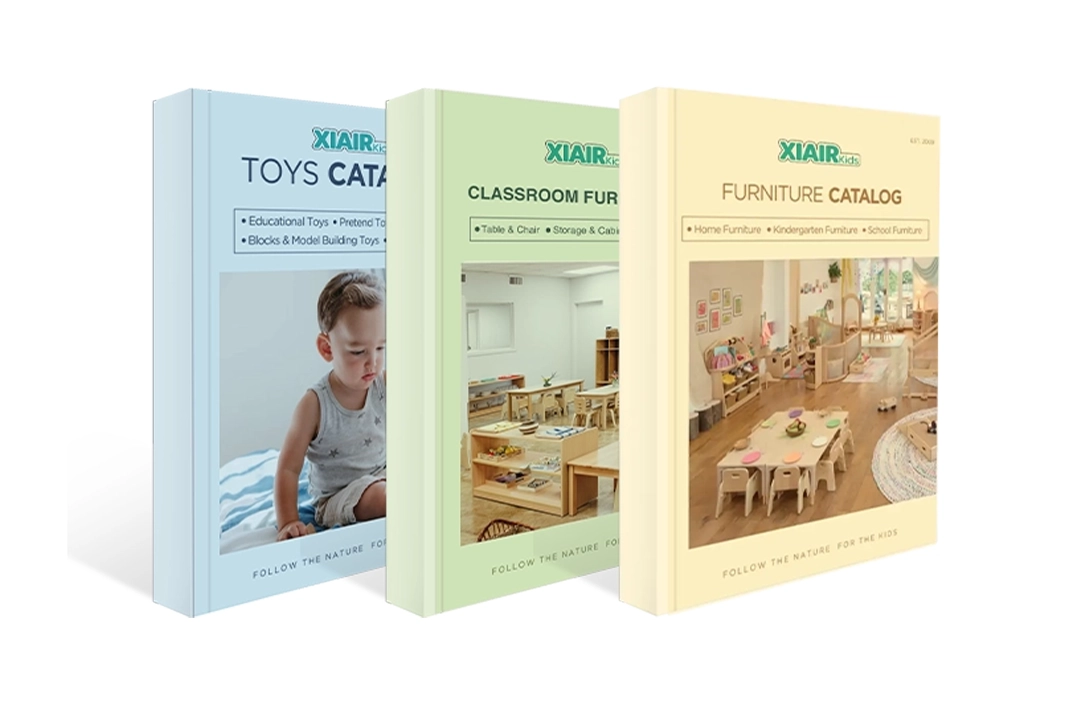教室や保育園向けの砂と水のテーブル
お子様の創造性、感覚的な探究心、そして実践的な学習を刺激するように設計された、プレミアムな砂遊びと水遊びのテーブルで、夢中になりましょう。幼稚園、保育園、ご家庭の遊び場に最適な、耐久性と安全性を兼ね備えたテーブルは、サイズをカスタマイズでき、取り外し可能な水盤とお手入れの簡単なデザインが特徴です。お子様が自由に探索、実験、そして協力して遊べる教育環境を作りましょう。楽しさと学びを両立させた究極のソリューションで、今すぐ遊び場をグレードアップしましょう!

砂と水のテーブルの種類とスタイル
あらゆる学習環境に合わせてデザインされた、様々な砂遊びテーブルと水遊びテーブルをご覧ください。幼稚園、保育園、幼児教室のそれぞれのニーズに応えるため、様々なタイプとスタイルを取り揃えています。伝統的な木製テーブル、カラフルなプラスチック製デザイン、モジュール式のカスタマイズオプションなど、あらゆるニーズにお応えします。
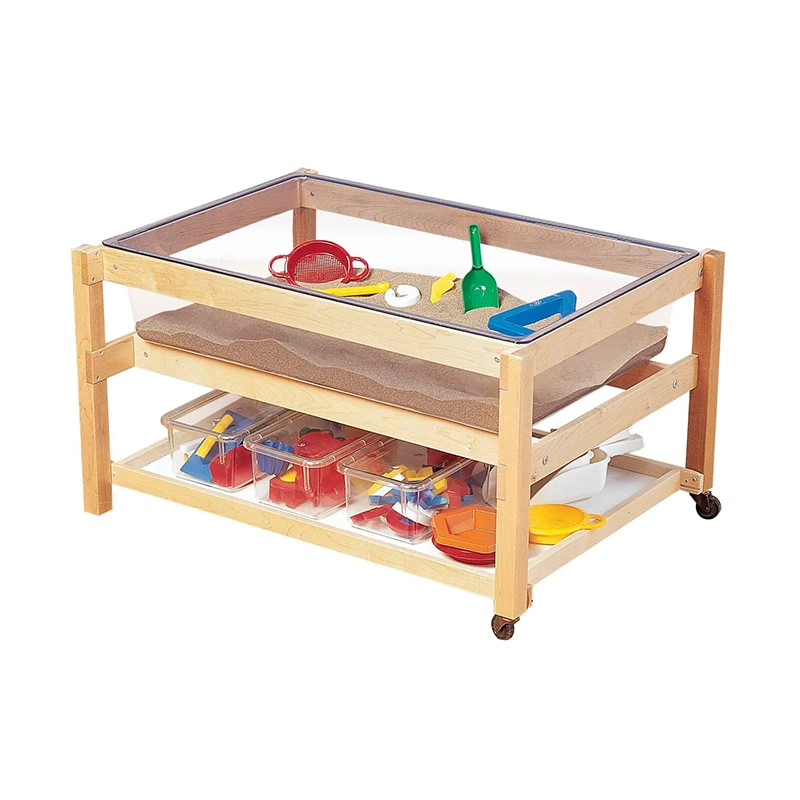
幼児向け砂水製品
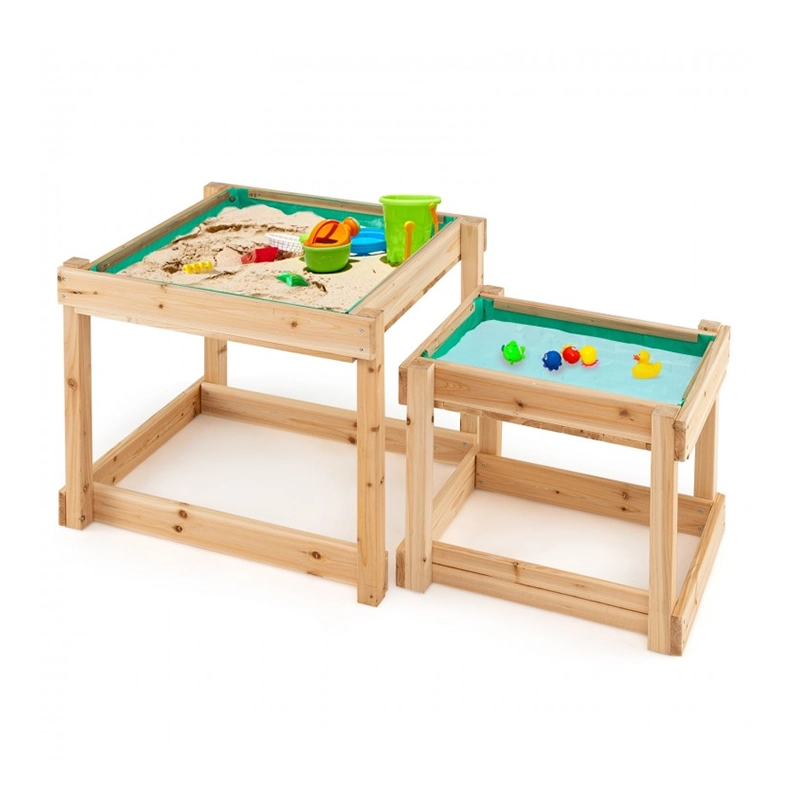
木製の砂と水のテーブル
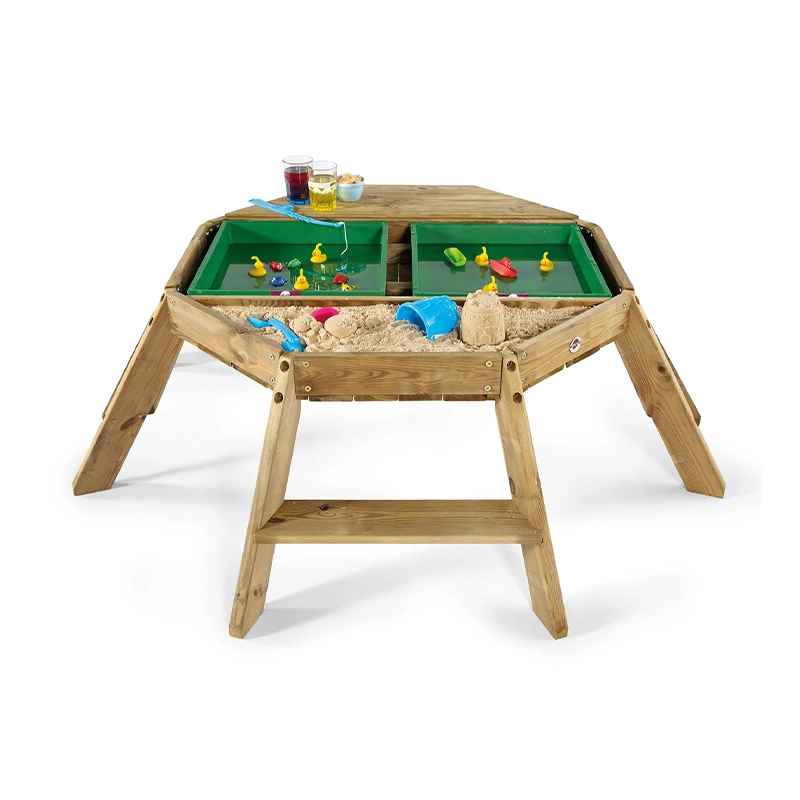
木製ウォータープレイテーブル
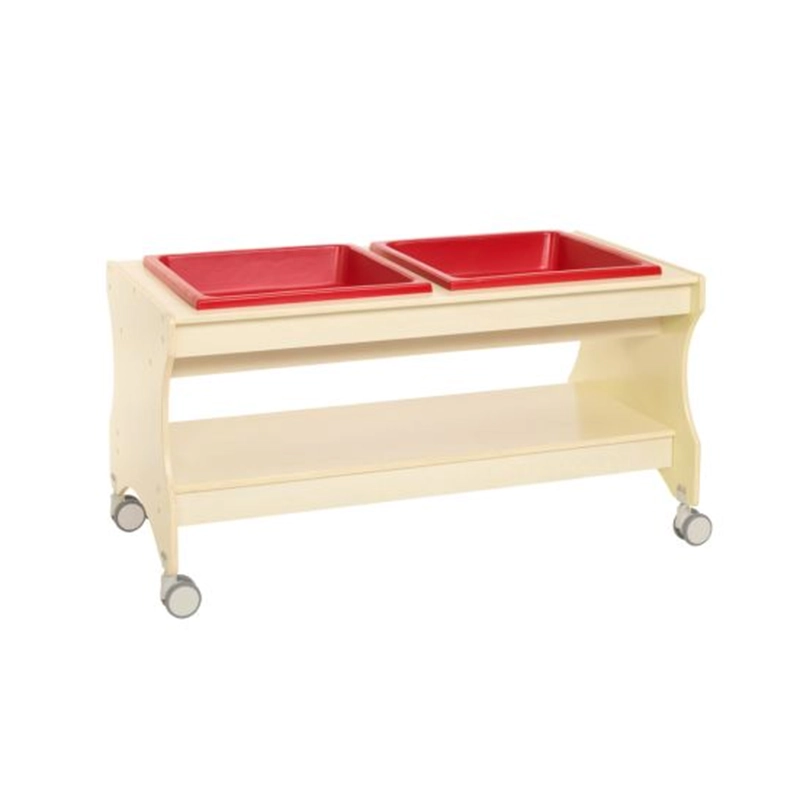
移動式砂と水のテーブル
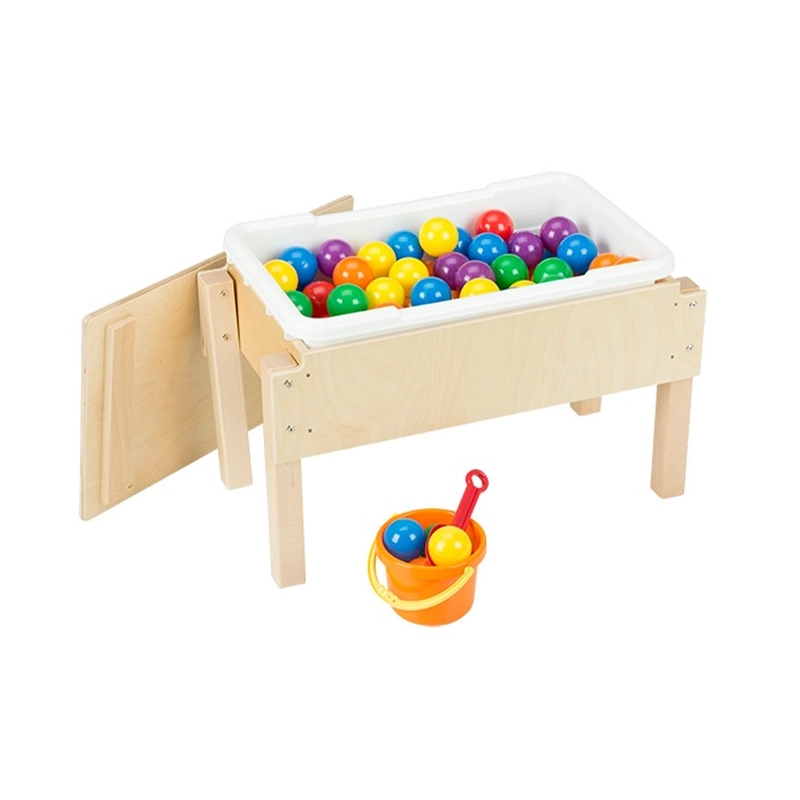
幼児用感覚テーブル
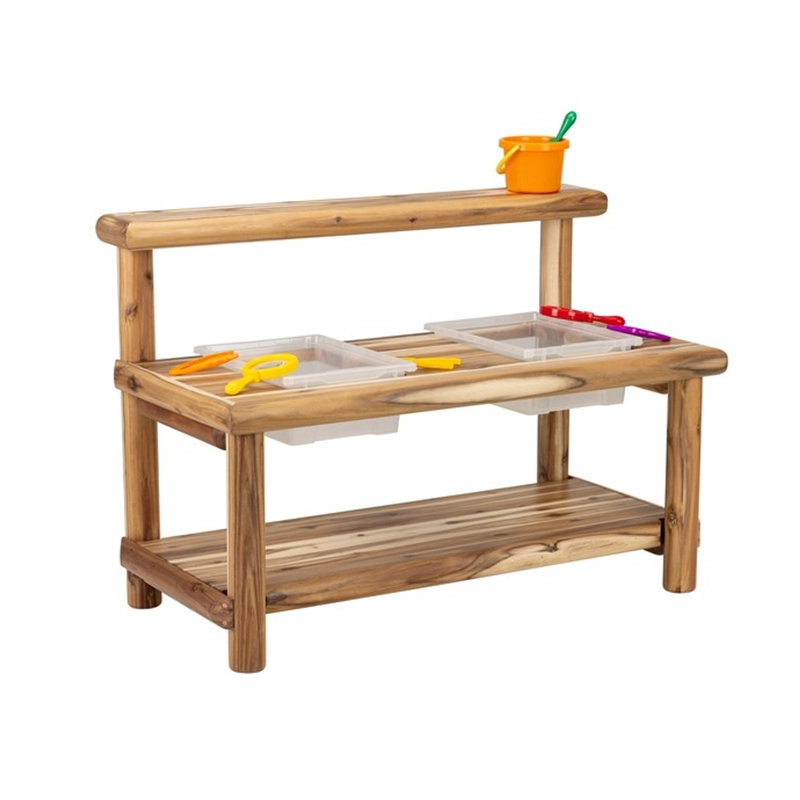
屋外用感覚テーブル
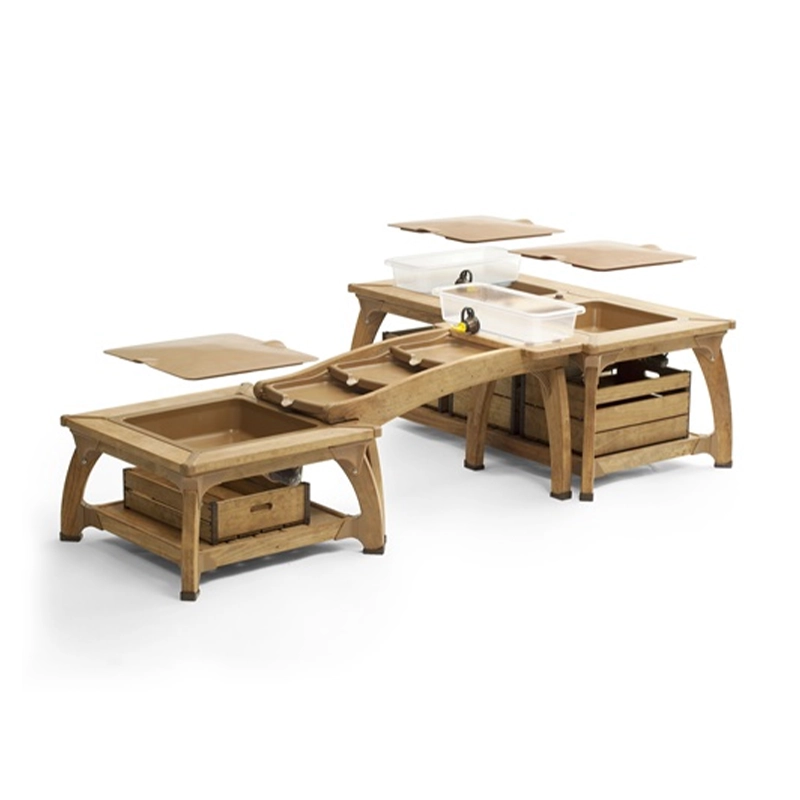
屋外トンネル水遊び

小さな砂と水のテーブル
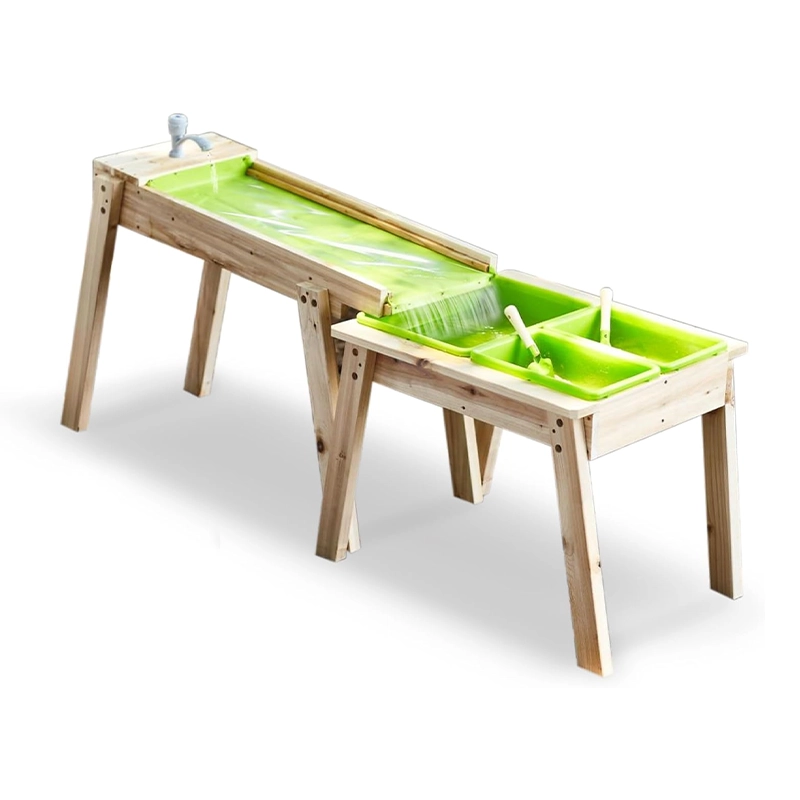
ラッシングリバーフォールズセンサリーテーブル
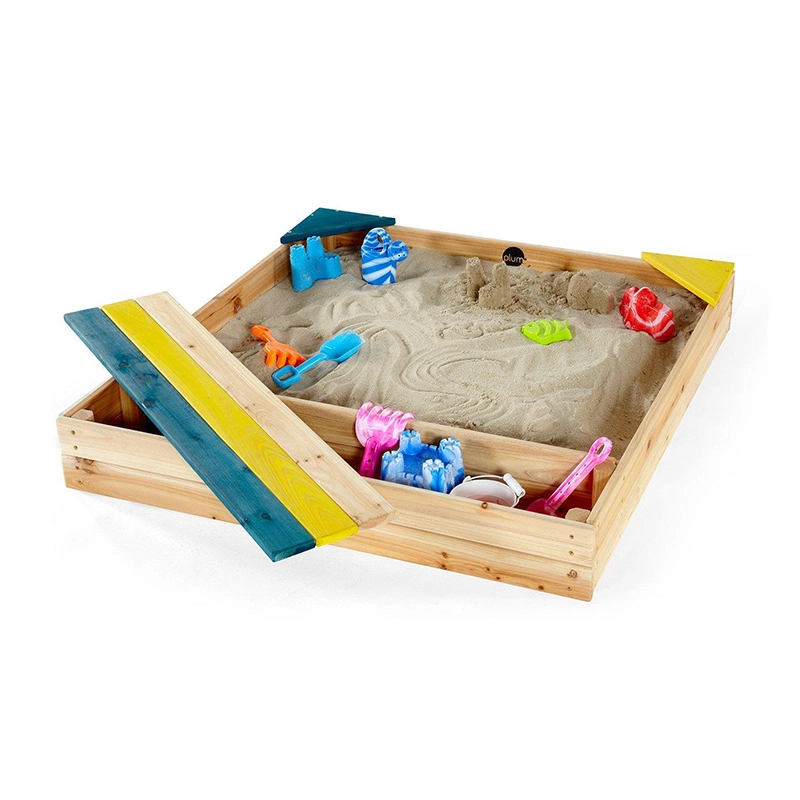
砂と水の遊び場
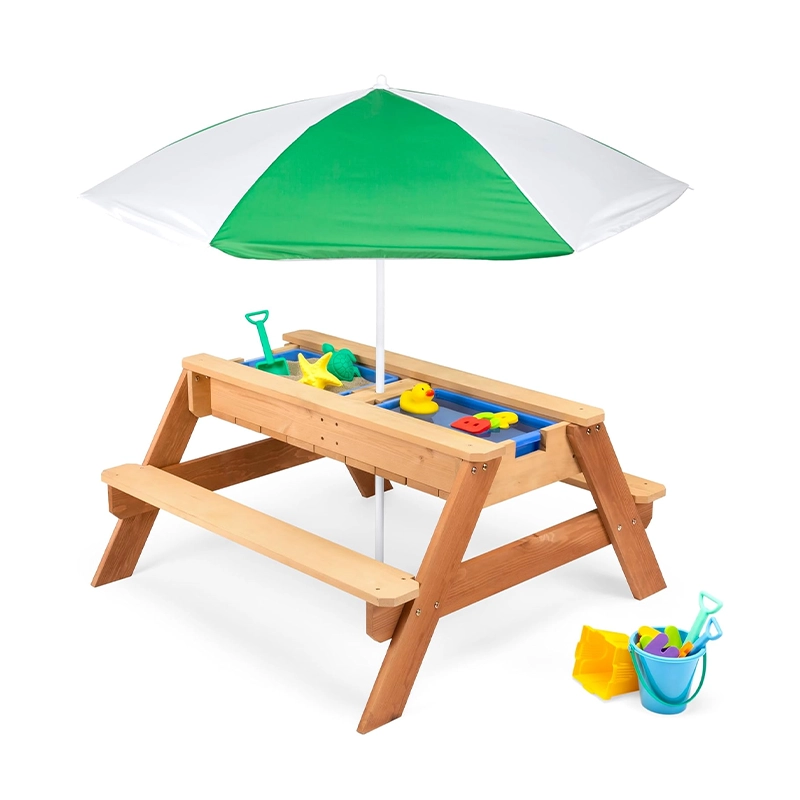
3-in-1 サンド&ウォーターテーブル
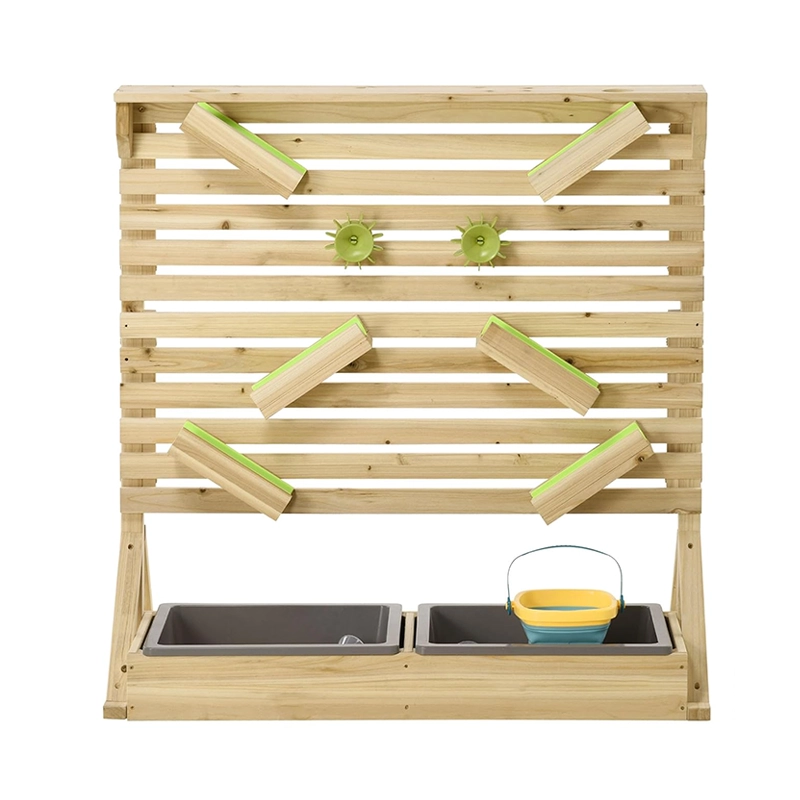
砂と水のプレイセット
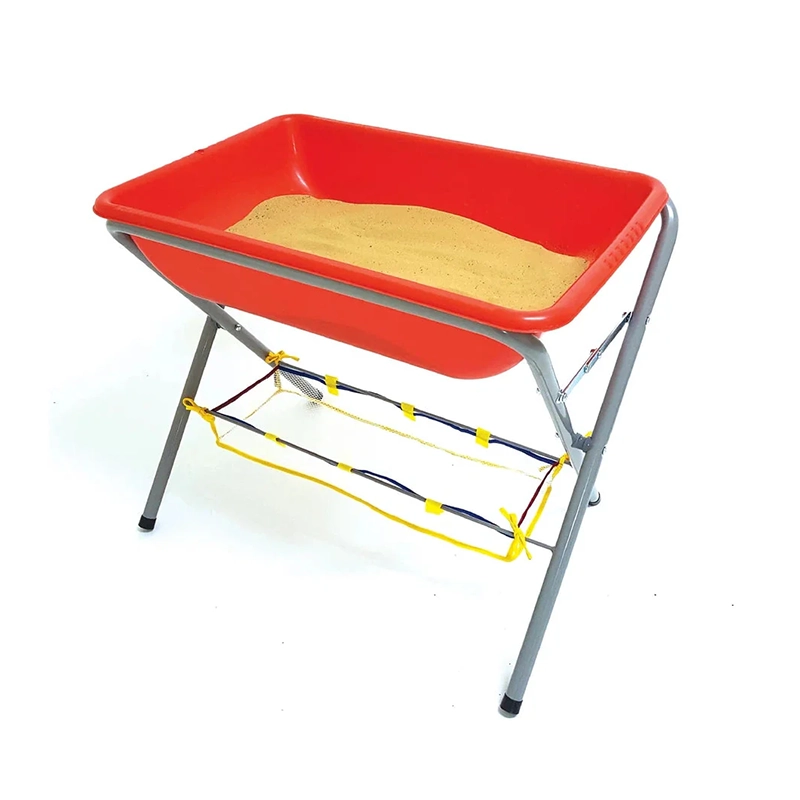
砂と水のアクティビティタブ
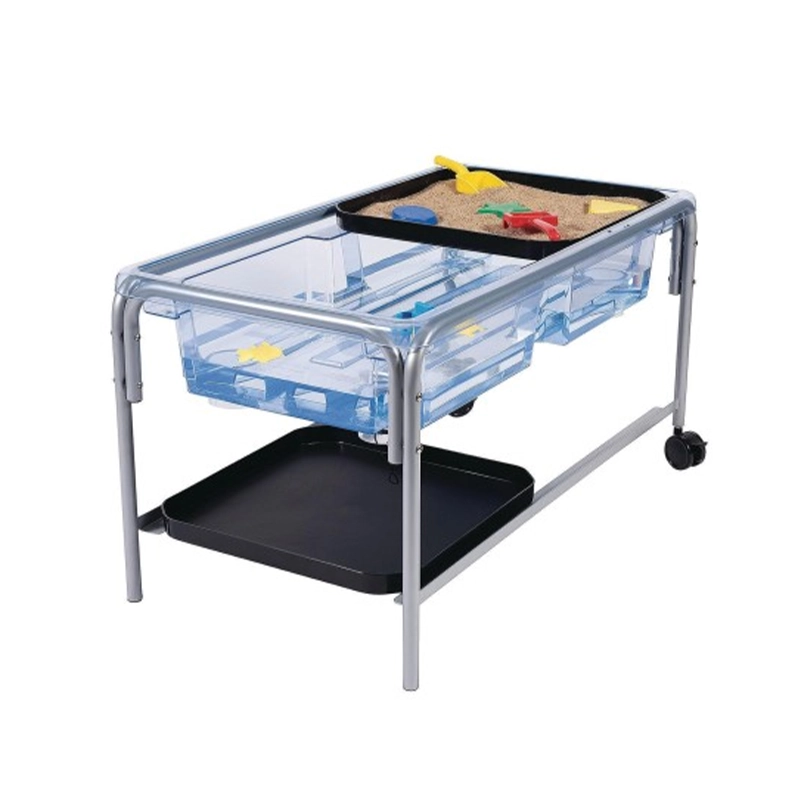
砂と水の感覚テーブル
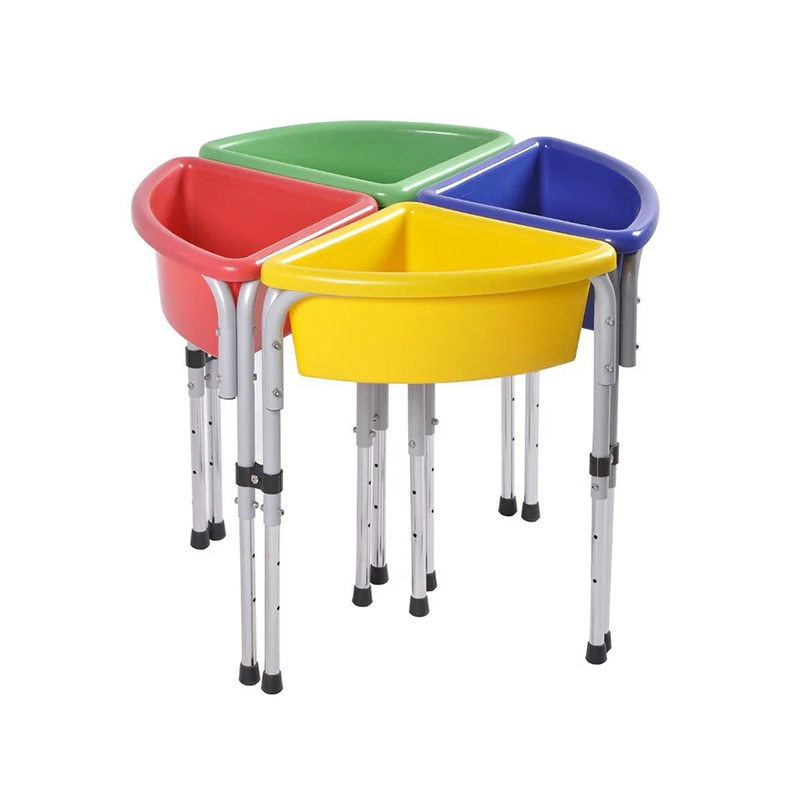
砂と水のトレイテーブル
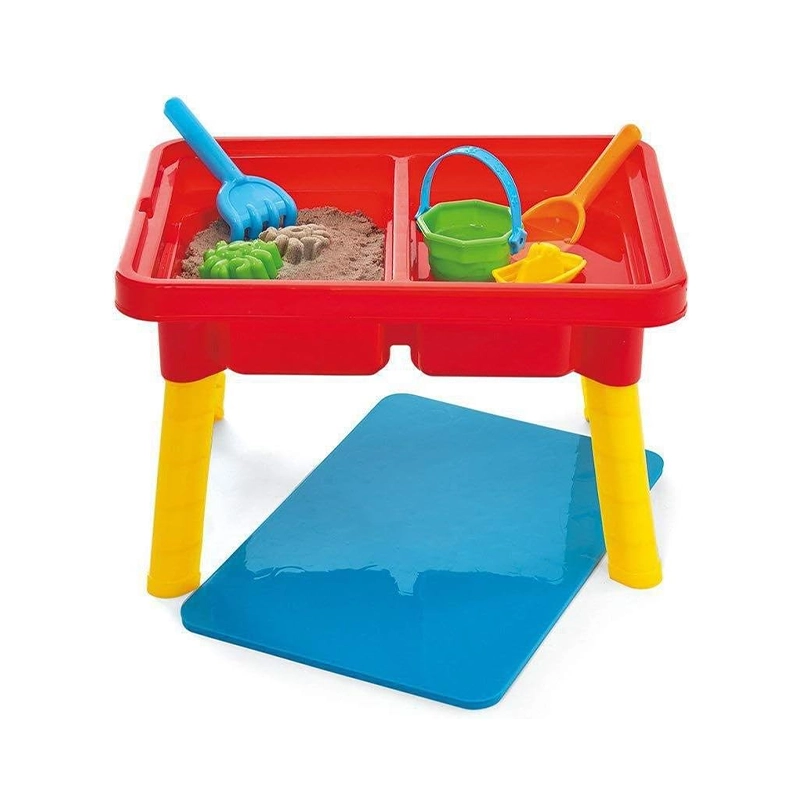
蓋付きセンサリーキッズテーブル
幼児向け砂遊び・水遊びテーブルの信頼できるメーカー
私たちは、あらゆる教育空間の基盤は、子どもたちの発達ニーズに基づいて築かれると考えています。私たちの製品は、安全性、快適性、そして教育的価値の向上に重点を置いています。すべての製品は、子どもたちの創造性、運動能力、そして社会性を高め、意義のある遊びを通して、生活に必要なスキルを育みます。
戦略的な港湾都市である大連に拠点を置く当社は、カスタム製品の設計からドアツードアの配送サービスまで、包括的なサポートを提供しています。グローバルな拠点網により、お客様の所在地を問わず、CEおよびCPC認証に基づいた最高のサービスと品質と安全性を保証いたします。
私たちの使命は、高品質な製品、卓越したカスタマーサービス、そして教育的価値への強いコミットメントを通して、お客様の期待を超えることです。私たちは、皆様の学習スペースを、子どもたちが成長できる環境へと変えるお手伝いをさせていただきます。
砂と水のテーブルのための材料
砂遊びテーブルや水遊びテーブルに使用される素材は、その機能性、耐久性、安全性において非常に重要です。耐久性のある屋外用モデルをお探しでも、お子様にも優しい屋内用モデルをお探しでも、様々な素材とその利点を理解することが重要です。
-
木材 伝統的で天然の木製の砂遊び用テーブルと水遊び用テーブルは、オークやパインといった耐久性の高い広葉樹で作られることが多いです。見た目は美しいですが、水によるダメージを防ぐために特別なメンテナンスが必要です。
-
プラスチック プラスチックは軽量でお手入れが簡単なため、砂遊びや水遊びのテーブルによく使われます。高密度ポリエチレン(HDPE)は、強度、耐水性、無毒性に優れているため、広く使用されています。プラスチック製のテーブルは屋外での使用に最適で、価格も比較的手頃です。
-
ステンレス鋼 ステンレス製のテーブルは、耐久性と耐腐食性に優れていることで知られています。高級デザインや工業デザインによく使用され、お手入れも簡単なので、屋内外を問わずお使いいただけます。
-
アクリル アクリルは、洗練されたモダンな外観を持つ透明または半透明のプラスチック素材です。強度があり、耐候性があり、お手入れも簡単です。プラスチックや木材ほど一般的ではありませんが、高級感のある外観から選ばれることが多い素材です。
-
樹脂 樹脂はプラスチックとその他の素材を組み合わせた複合素材で、耐久性、耐候性に優れ、軽量なテーブルを実現します。樹脂製テーブルは屋外環境にも耐えられるよう設計されており、メンテナンスも比較的簡単です。
-
ガラス 強化ガラスは、砂場や水場の透明なカバーとしてよく使用されます。強度と安全性に優れ、割れにくいのが特徴です。滑らかな表面は清掃やメンテナンスが容易です。ガラスは中身をはっきりと見ることができるため、ユーザーエクスペリエンスを向上させます。
砂と水のテーブルとは何ですか?
砂と水のテーブルは、小さなお子様が砂や水、その他の素材を使って探索したり、実験したり、感覚遊びを楽しんだりできるように設計されています。これらのテーブルは、学校、保育園、遊び場などの教育現場でよく使用されますが、家庭でも使用できます。
テーブルは通常、浅くて丈夫な表面を備えており、子供たちは砂や水を注いだり、ふるいにかけたり、操作したりできます。スコップ、漏斗、蓋などの追加機能が付いていることもよくあります。テーブルの中には、片側が砂用、もう片側が水用のスペースに分かれているものもあります。一方、砂や水を入れるためのテーブルや、おもちゃの船、小さな生き物、工作道具など、創造性を高めるための付属品が付いているものもあります。
子供のための砂と水のテーブルの利点
砂遊びと水遊びのテーブルは、多用途でインタラクティブな学習ツールです。子どもたちに実践的な体験を提供し、様々な質感、性質、そして自然の要素を探求する機会を提供します。これらのテーブルは、感覚遊び、認知発達、そして創造的な表現の機会を提供します。
感覚の発達
砂遊びや水遊びは、子どもたちが様々な質感や感覚を探求し、触覚を研ぎ澄ますのに役立ちます。砂や水を扱うことで、子どもたちは材料をすくったり、注いだり、動かしたりすることで、微細運動能力を育みます。また、これらの活動は重要な感覚刺激を与え、脳の感覚処理システムの発達を促します。
認知的成長
子どもたちは、因果関係の実験を通して、体積、変位、重力といった基本的な科学原理を学びます。遊びの中で試行錯誤を繰り返すことで、子どもたちは水を動かす方法や砂で安定した構造物を作る方法を考え出す中で、問題解決能力を育みます。こうした経験を通して、認知発達と批判的思考力が育まれます。
創造性と想像力
子どもたちは砂遊びや水遊びのテーブルを使って、砂のお城を作ったり、水遊びの物語を作ったりと、想像力豊かなシナリオを作り上げます。テーブルは自由に遊べる設計になっているため、子どもたちは自由に創造性を表現でき、限界がありません。このような遊びは、子どもたちの想像力を育み、創造性を育みます。
創造性
多くのソフトプレイセットは、想像力豊かな遊びを促します。子どもたちは、ブロックを使って構造物を作ったり、ソフトプレイの感覚ルームで様々なシナリオをロールプレイしたりすることで、創造力を発揮します。これは、問題解決能力や批判的思考力を高めるのに役立ちます。
ソーシャル・スキル
砂場や水遊び場で他の子どもたちと遊ぶことは、子どもたちが分かち合い、順番を守り、協力し合うことを促し、重要な社会スキルを育むのに役立ちます。子どもたちは、仲間と効果的にコミュニケーションを取り、交渉する方法を学び、チームワークを育みます。このインタラクティブな遊びを通して、子どもたちは社会的な力学を理解し、対立を解決する能力も身につけます。
言語発達
子どもたちは、食卓で自分の行動を説明することで、語彙を増やし、コミュニケーション能力を高めます。作ったものや実験しているものについて会話をすることで、新しい言葉やフレーズを使うようになります。遊びの中で想像力豊かなシナリオを作り上げることで、物語を語る能力や描写的な言語能力も発達します。
感情のコントロール
すくう、注ぐ、掘るといった反復動作は、子どもの心を落ち着かせ、感情をコントロールするのに役立ちます。こうした集中的な遊びは、感情の安定を促し、ストレスやフラストレーションを解消する癒しの場となります。また、子どもが新しいスキルを習得するにつれて、達成感と自尊心の向上にもつながります。
身体発達
砂遊びや水遊びは、子どもたちの全身を使うことを促し、感覚統合と協調性の発達を促します。砂や水を持ち上げたり、運んだり、注いだりすることで、筋力と持久力が養われます。これらの身体活動は、身体全体の成長に不可欠なバランス感覚と運動能力の発達に貢献します。
砂と水のテーブルを選ぶ際に考慮すべき主な特徴
幼稚園や保育園にぴったりの砂遊びテーブルを選ぶのは難しいものですが、いくつかの重要な機能に注目することで、選びやすくなります。これらの機能により、砂遊びテーブルは実用的で安全になり、お子様の遊び体験全体を豊かにすることができます。
サイズとスペース
砂遊びテーブルを選ぶ際は、ご自宅、庭、または教室の利用可能なスペースを考慮してください。テーブルには様々なサイズがあり、狭いスペースに最適なコンパクトなモデルから、より広いスペースで遊べる大型のマルチセクションテーブルまであります。お子様が動き回れるスペースを確保しつつ、テーブルが遊び場に快適に収まることを確認してください。
品質と耐久性
高密度プラスチック、丈夫な木材、ステンレススチールなど、耐久性があり毒性のない素材で作られたテーブルを探しましょう。素材は、水、日光、砂などへの頻繁な曝露に耐えられるものでなければなりません。テーブルを屋外で使用する場合は、紫外線に強い素材を選ぶことで、経年劣化や色あせを防ぐことができます。
年
砂遊びテーブルと水遊びテーブルが、お子様の年齢層に合っているか確認しましょう。幼児向けに設計されたテーブルの中には、側面が低くアクセスしやすい設計のものもあれば、大きな面積と追加機能を備えた年長児向けのものもあります。お子様の発達段階に最適なテーブルを選ぶには、年齢推奨と安全ラベルをご確認ください。
安全性
安全は常に最優先事項です。お子様に危害を与える可能性のある鋭い角を避けるため、角が丸みを帯びたテーブルを選びましょう。また、窒息の危険となる小さな部品がないか確認してください。さらに安全性を高めるために、水が溜まると滑りやすくなるため、排水穴付きのモデルを選びましょう。
清掃とメンテナンス
砂遊びや水遊びは汚れやすいので、掃除が簡単なテーブルを選びましょう。取り外し可能なトレイやカバー付きのモデルは、汚れを軽減し、掃除を楽にしてくれます。プラスチックなどの素材は一般的に拭き取りやすいですが、水が素早く効率的に排水できる機能が付いているものを選ぶようにしましょう。
アクセサリー
砂遊びテーブルや水遊びテーブルの中には、蓋やおもちゃのアクセサリー、あるいは段差のあるデザインなど、追加機能が付いているものもあります。蓋は使用していない時にテーブルを清潔に保つのに役立ち、シャベル、熊手、カップなどのアクセサリーは、よりインタラクティブな遊びを促します。段差のあるテーブルは、砂と水が別々のエリアに分かれているため、遊びに変化をもたらします。
水と砂場の材料となる砂の種類
ウォーターテーブルを選ぶ際には、適切な水と砂の種類、そしてテーブルに適した機能を選ぶことが、お子様の興味を引きつけ、楽しく安全な体験を提供するために不可欠です。以下に重要な点をいくつかご紹介します。
1. 天然砂遊び
天然砂は、砂遊びや水遊びのテーブルに最もよく使われる素材です。通常、粒子が細かく、有害な化学物質を含まないため、お子様にも安全です。この砂は、ほとんどのホームセンターやおもちゃ専門店で見つけることができます。
2. 色砂
視覚的に刺激的な体験をしたいなら、色付きの砂がおすすめです。パステルカラーから鮮やかな色まで、様々な色合いがあり、感覚遊びに新たな次元を加えてくれます。色付きの砂は無毒の染料で作られていることが多いですが、お子様にとって安全であることを確認するために、ラベルをよく確認しましょう。
3. キネティックサンド
キネティックサンドは、くっつきやすいユニークな砂で、子供たちが大好きな、形を変えられるような質感が特徴です。通常の砂とは異なる性質を持つことから、「魔法の砂」として宣伝されることが多く、想像力豊かな遊びに最適です。ただし、キネティックサンドは通常の砂よりも掃除が難しい場合があるので、選ぶ際にはその点にご注意ください。
4. 安全な合成砂
天然砂に細菌や汚染物質が含まれているのではないかと心配な親御さんには、「Smarty Sand」や「Sandtastik」といったブランドが製造する安全な合成砂がおすすめです。これらの砂は通常、無毒の天然成分を使用して製造されており、天然砂よりも耐久性が高くなっています。
5. オーガニックサンド
環境に配慮したご家庭には、オーガニック砂のオプションもご用意しています。これらの砂は持続可能な方法で調達され、化学物質を含まないものが多く、環境に優しい代替品となります。
6. 水道水
普通の水道水は、ほとんどの家庭にとって最も簡単で手軽な選択肢です。便利で、短時間の遊びなら問題ありません。ただし、水温が小さな手にとって快適な温度であることを確認してください。
7. 蒸留水
より清潔な選択肢として、不純物を取り除いた蒸留水を選ぶ親もいます。これは、硬水やミネラルを多く含む水(テーブルやおもちゃにシミがつく可能性がある)の地域にお住まいの家庭にとって特に便利です。
8. フレーバーウォーターや着色水
食用色素や子供に安全なフレーバーウォーターを数滴加えると、遊びがさらに楽しく、夢中になれるでしょう。感覚体験が豊かになり、さらに探求心を刺激しますが、テーブルを掃除する回数が増えるかもしれません。
9. 温度管理された水
寒い季節には、テーブルに温水をかけると良いでしょう。温水を使えば、寒い日でもお子様はより長く遊べます。ただし、火傷を防ぐため、温度には十分注意してください。
砂遊びと水遊びのおもちゃ
砂遊びや水遊びのテーブルには、感覚遊びを豊かにし、創造性を育み、認知能力や運動能力を育むための様々なおもちゃが備えられているのが一般的です。これらの水遊びや砂遊びのテーブル用おもちゃは、子どもたちの実践的な探求や実験を促し、遊びを魅力的な学習機会へと変えます。
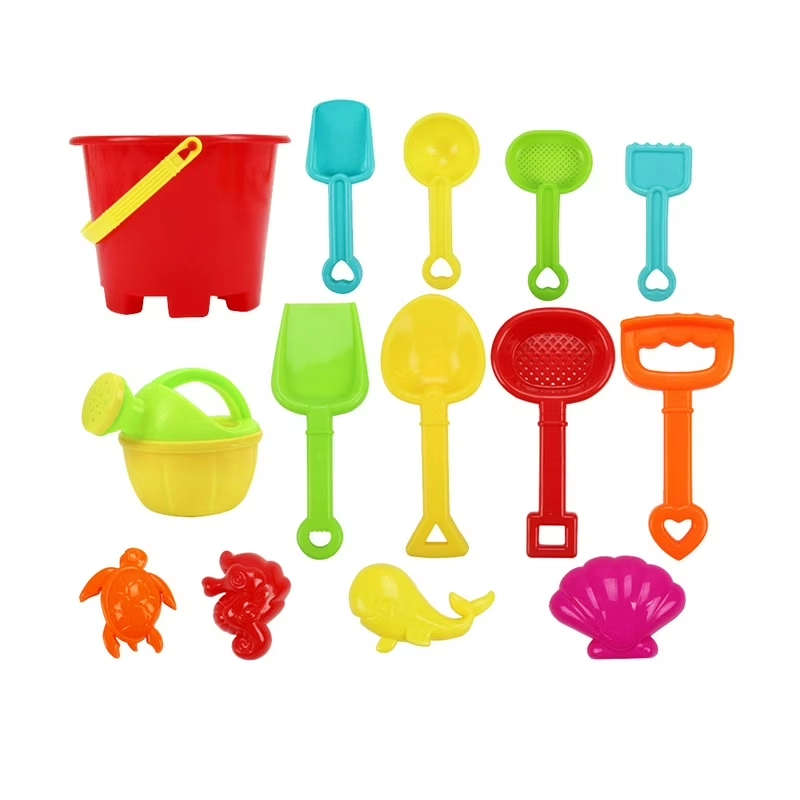
スコップとシャベル
スコップやシャベルは、子どもが砂や水を運ぶのに欠かせない道具です。手と目の協調性や細かい運動能力を育むのに役立ちます。また、砂で構造物を作ったり、「宝物」を掘ったりすることで、想像力豊かな遊びを促します。
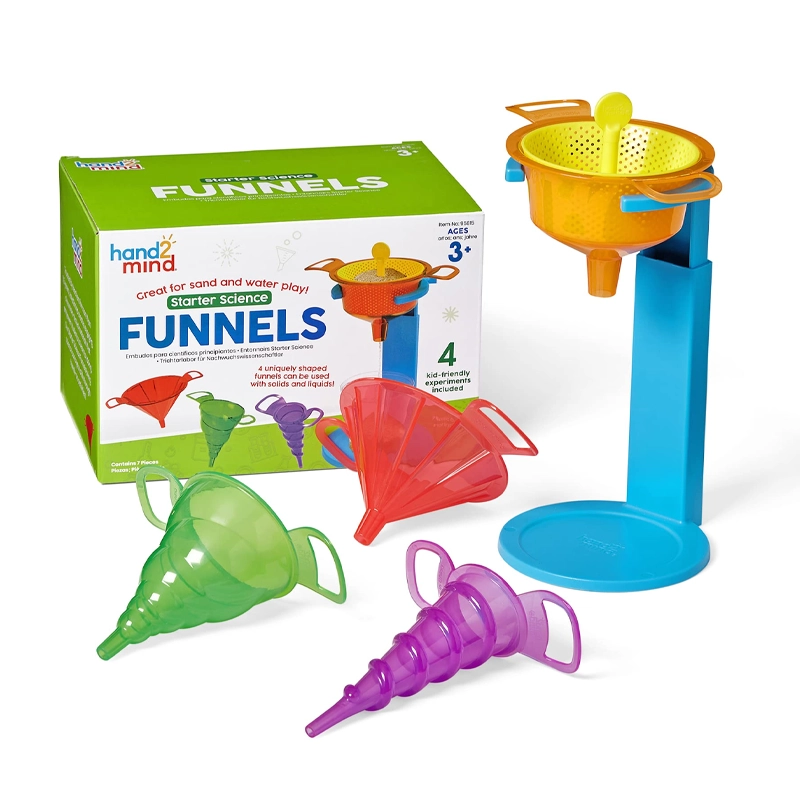
漏斗とパイプ
漏斗やパイプを使うことで、子どもたちは水や砂が様々な方向にどのように動くかを観察し、流れ、重力、そして因果関係についての理解を深めることができます。これらのおもちゃは、様々な経路を通る物質の動きを実験することで、子どもたちの好奇心を刺激します。
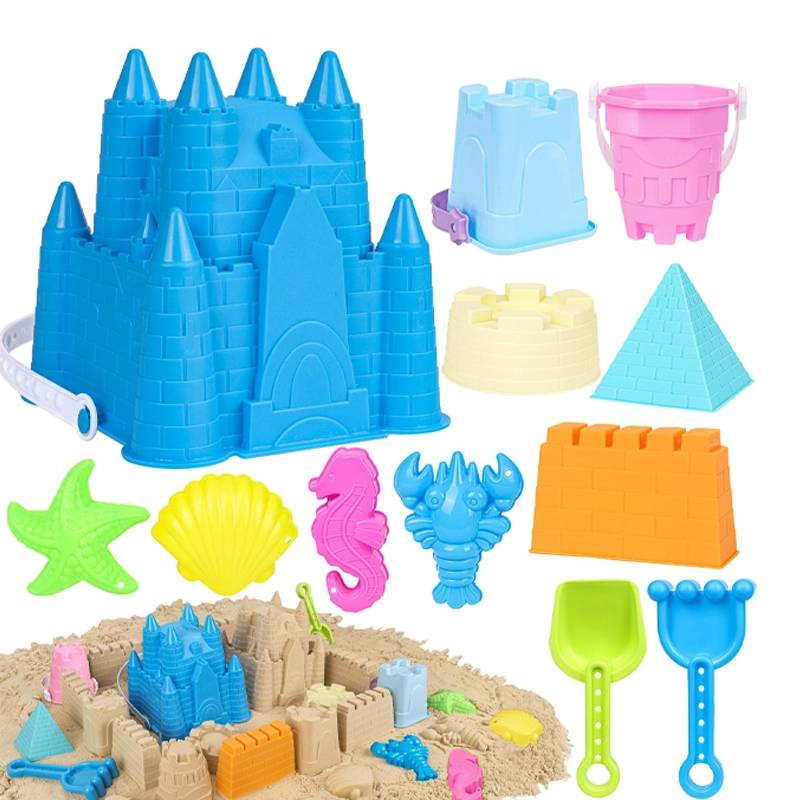
型と砂の城の道具
型やお城作りの道具を使うことで、子どもたちは砂で形を作ったり、彫刻したりすることができ、創造性と空間認識力を高めることができます。これらの道具は、触覚感覚を発達させ、複雑なデザインを作り上げることで、子どもたちの芸術的表現を促します。
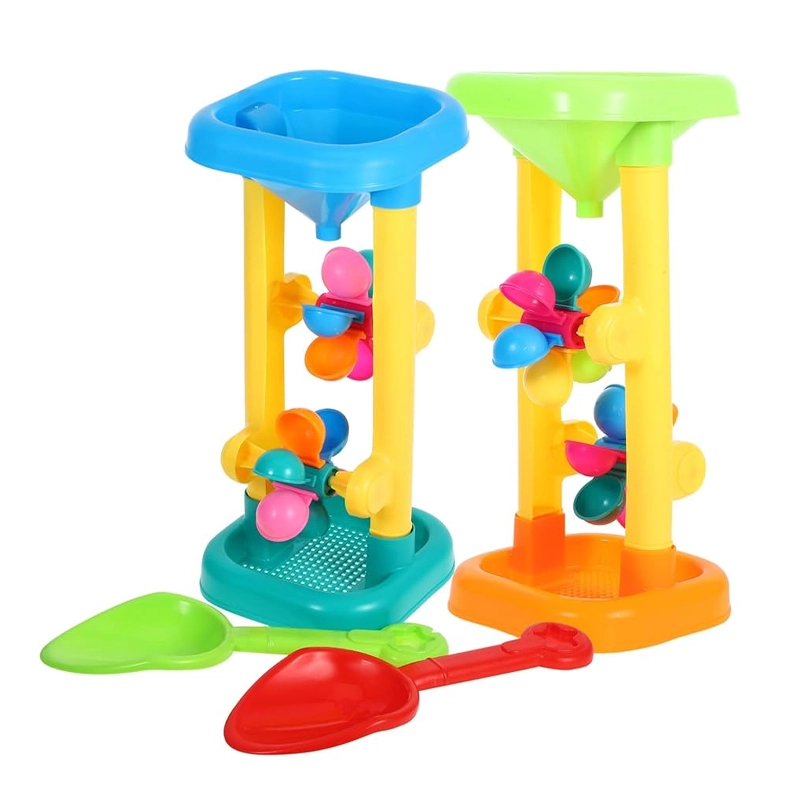
水車
水車は、水を注ぐと回転する楽しい遊び道具です。子どもたちに水の動き、回転、そして水の性質について学ばせます。このおもちゃは、協調性を高めるだけでなく、子どもたちが原因と結果を視覚的に楽しく理解する助けにもなります。
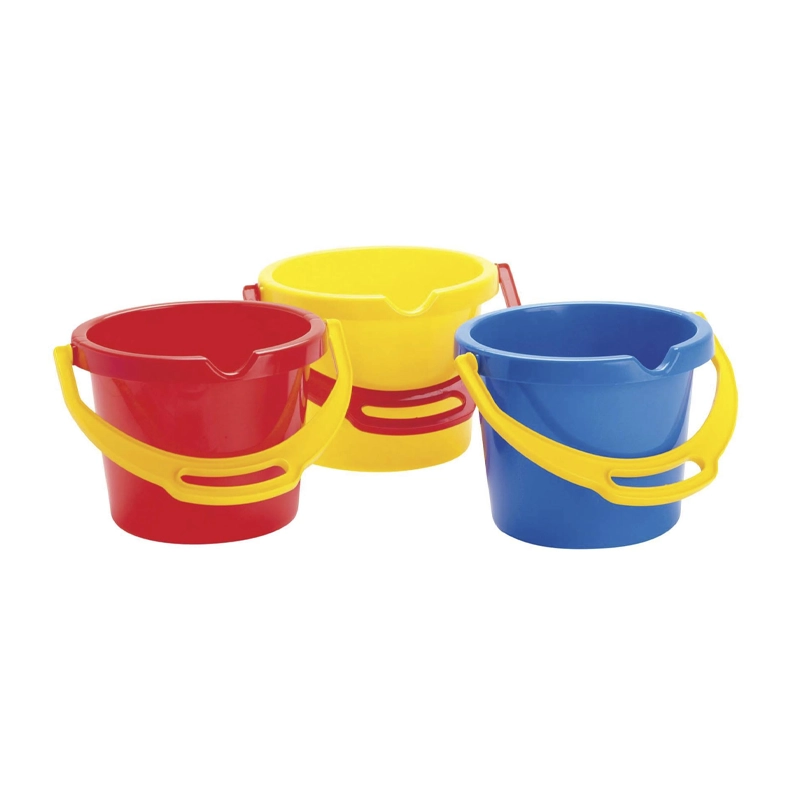
バケツとカップ
バケツやカップは、水や砂を測ったり、注いだり、混ぜたりするのに役立ち、子どもたちに量や測定の基本的な概念を教えてくれます。これらの道具は、繰り返し練習を促し、細かい運動能力を強化し、ごっこ遊びやロールプレイング活動の機会を提供します。

ミニ動物とフィギュア
動物、人、乗り物などの小さなフィギュアは、砂遊びや水遊びで物語やシナリオを作るのに使えます。子どもたちは想像力豊かな遊びを通して、他の子どもたちと物語を作り上げたり、役を演じたりすることが多いため、これらのおもちゃは社会性を育むのに役立ちます。
砂と水遊びテーブルのメンテナンス
砂と水のテーブルを長持ちさせ、清潔に保つには、メンテナンスが不可欠です。テーブルを最高の状態に保つためのヒントをいくつかご紹介します。
定期清掃:
砂と水を定期的に掃除し、汚れ、ゴミ、カビを取り除いてください。水を捨て、テーブルをすすぎ、新しい水を補充してください。砂が汚れたり、ベタベタしたり、固まったりした場合は、最適なプレイ環境を保つために交換してください。
使用後の消毒:
毎回遊んだ後は、テーブルとおもちゃを子供に安全な低刺激性の洗剤で消毒してください。表面を拭き、使用したおもちゃはすすいでください。こうすることで、細菌の増殖を防ぐことができます。
摩耗や損傷の確認:
テーブル、おもちゃ、付属品にひび割れ、鋭利な角、破損した部品などの損傷の兆候がないか定期的に点検してください。テーブルの安全性と機能性を維持するために、損傷した部品は交換または修理してください。
乾燥した場所での保管:
使用していないときは、特に屋外用の場合は、テーブルを乾燥した場所に保管してください。雨や湿気に長時間さらされると、素材が損傷する可能性があります。砂はカビの発生を防ぐため、乾燥した通気性の良い容器に保管してください。
おもちゃの清掃とメンテナンス:
遊んだ後は毎回、砂場や水遊び場のおもちゃを洗って、砂、汚れ、粘着性の残留物を取り除いてください。カビや腐食を防ぐため、乾燥した場所に保管し、定期的に点検して、安全上の問題につながるような摩耗の兆候がないか確認してください。
汚染を避ける:
砂と水を安全に保つために、食べ物、泥、化学物質など、遊びに関係のないものをテーブルに持ち込まないようにしてください。これらは遊び場を汚染し、将来使用する際に不衛生になる可能性があります。
砂場や水遊びのおもちゃで楽しいアクティビティ
砂場や水場のテーブルは、子供たちの想像力豊かな遊びや教育的な探究心を刺激する創造的で感覚豊かなアクティビティの無限の可能性を提供します。
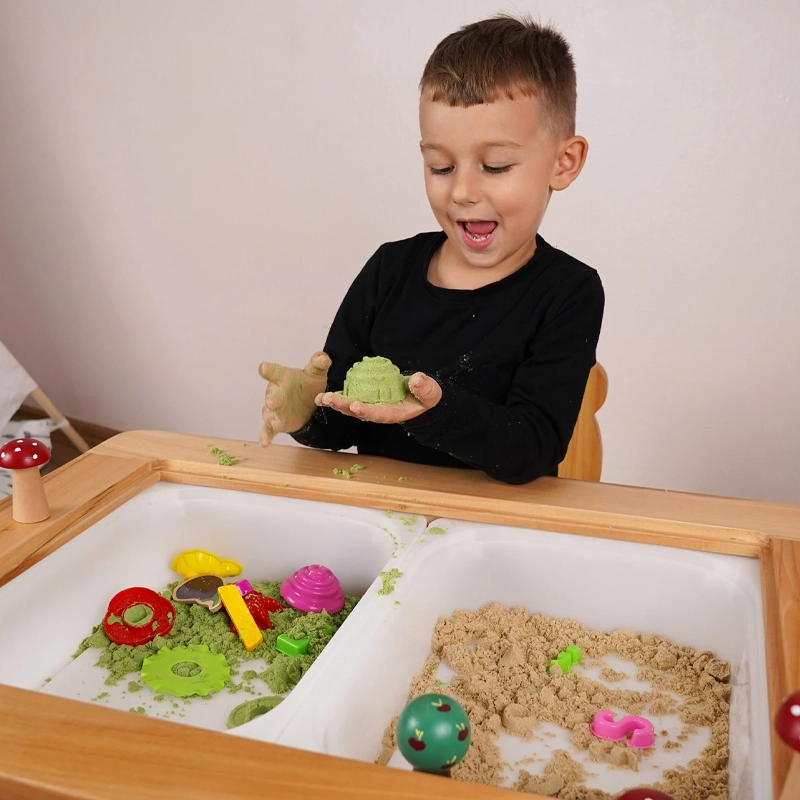
砂の城の建設
型や砂のお城を作る道具を使って、複雑な構造物を作りましょう。子どもたちは様々な形や大きさの砂を試しながら、細かい運動能力と創造力を高めることができます。砂に水を加えると、砂を固めやすくなります。
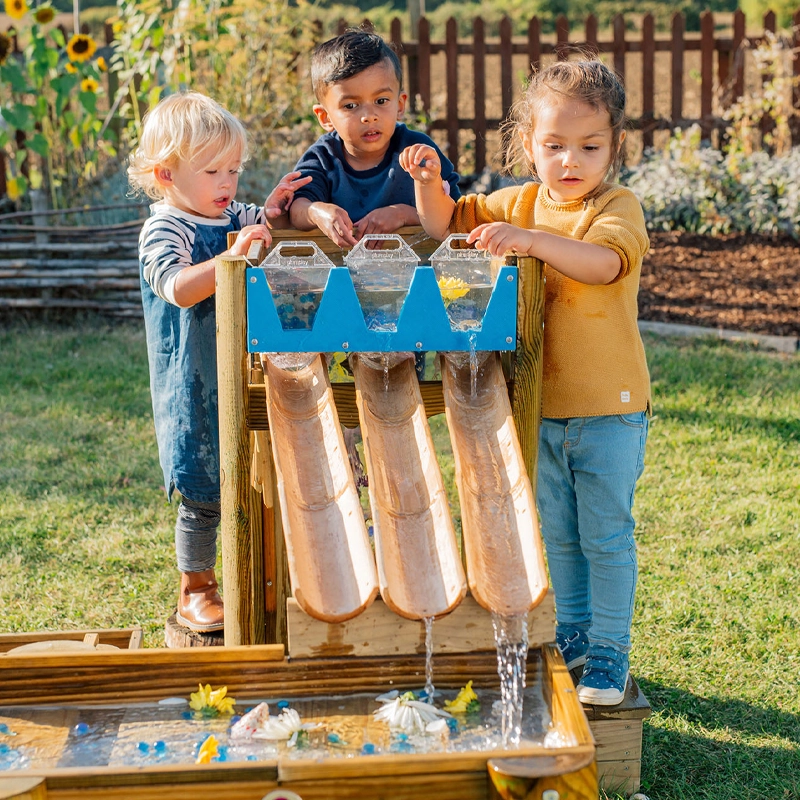
水の流れ
漏斗、パイプ、水車などを設置して、様々な水路を通る水の流れを実験してみましょう。子どもたちは水の動きを観察し、高さ、角度、方向を調整することができます。このアクティビティは、物理学の基礎的な理解を育みます。
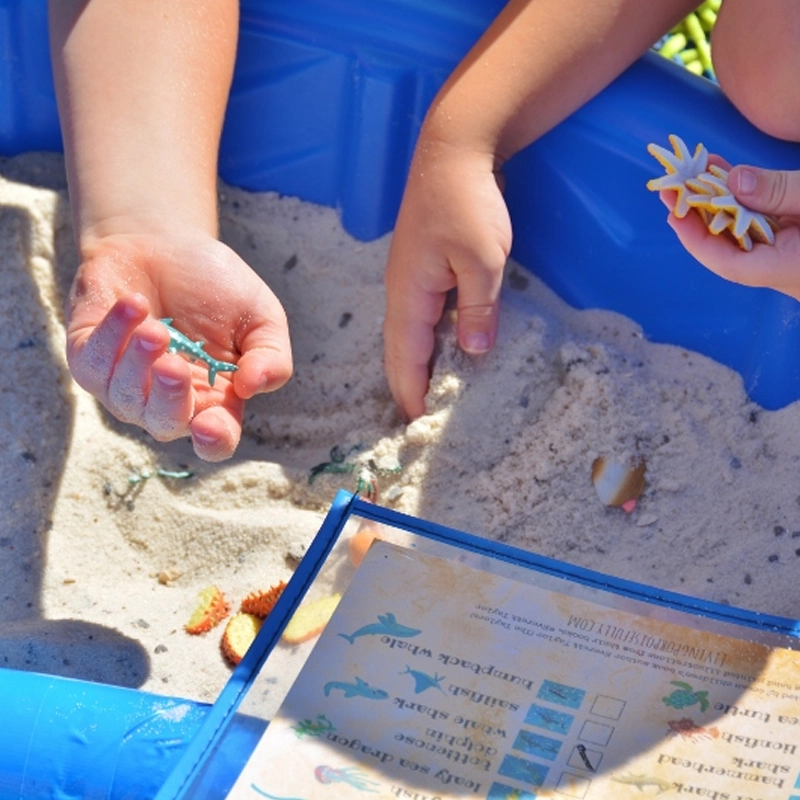
宝探し
小さなおもちゃや物(貝殻、小石、人形など)を砂や水の中に埋め、子どもたちに掘ったり、すくったりして見つけさせましょう。このアクティビティは、感覚の探究心を育み、細かい運動能力の発達を促し、好奇心と発見を刺激します。
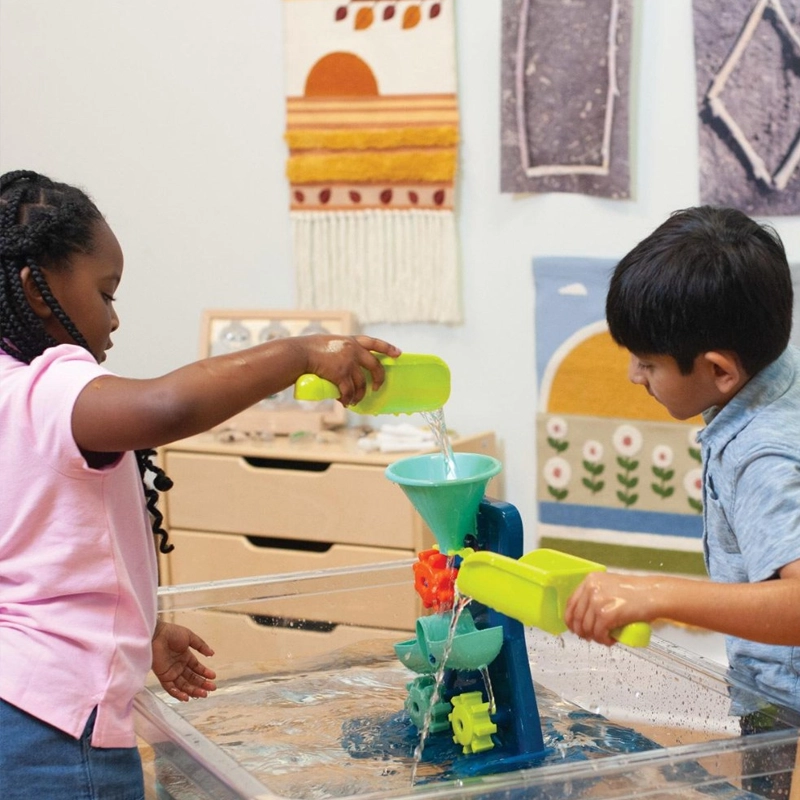
注ぎ方と計量
様々なカップ、バケツ、スコップなどを用意して、子どもたちが砂や水の量を測り、注ぐ練習をしましょう。このアクティビティは、体積や容量といった基本的な算数の概念を学ぶと同時に、手と目の協調性も養います。
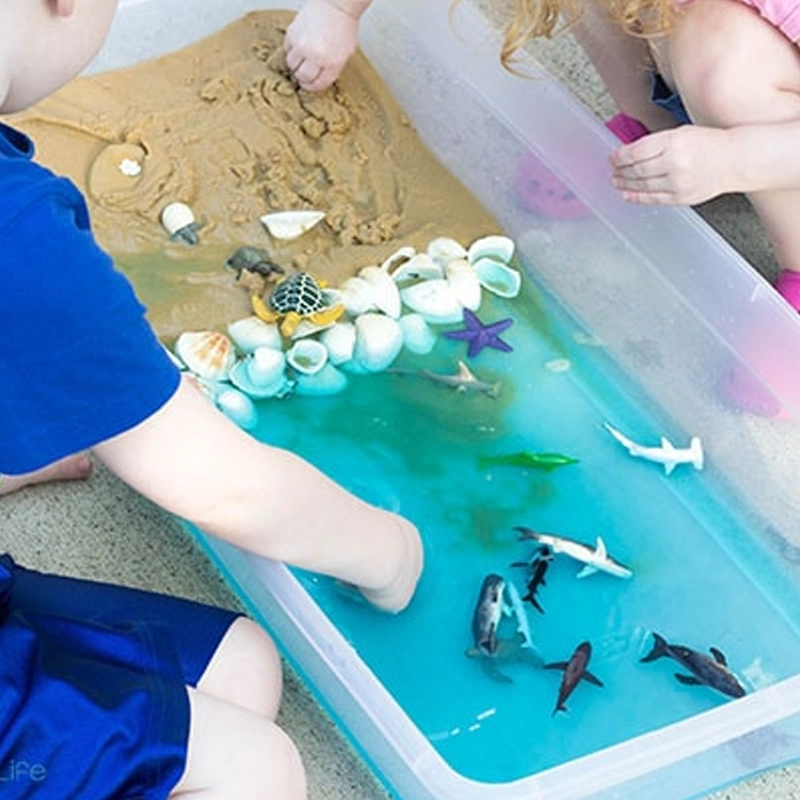
動物の生息地の創造
小さな動物のフィギュアと砂を使って、想像上の生息地を作りましょう。砂を形作り、水を加えることで、子どもたちは砂漠、ジャングル、海などを作ることができます。このアクティビティは、創造性、物語の表現力、そして自然界への理解を深めます。
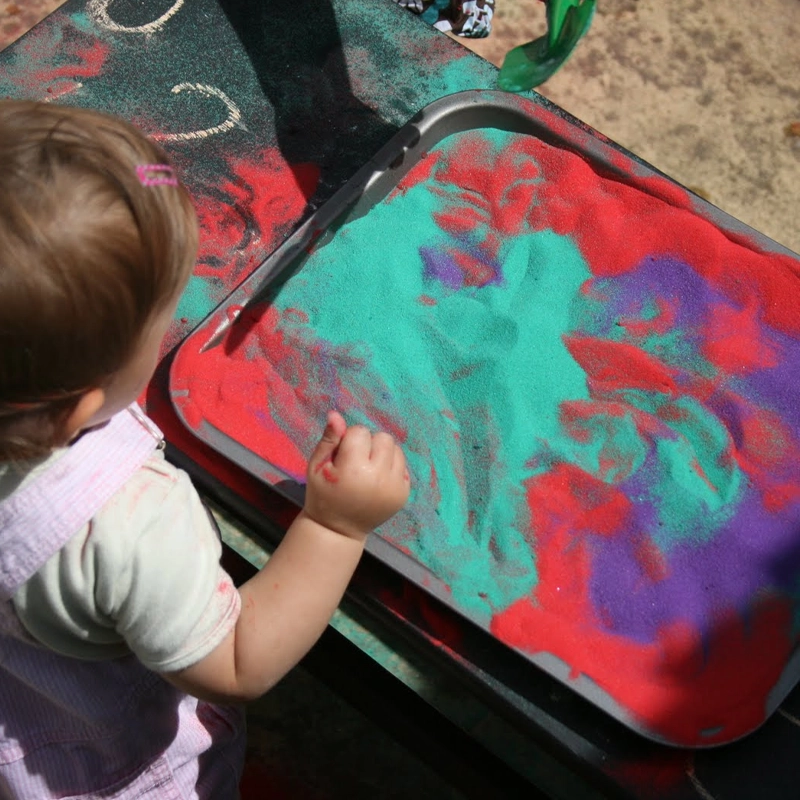
色と質感を混ぜる
テーブルに色のついた水や、質感の異なる砂を置き、子どもたちに混ぜ合わせさせましょう。色がどのように混ざり合うか、実験してみましょう。これは感覚的な探究心を育み、色彩理論の基本的な概念を学ぶ機会となります。
砂場や水場のアクティビティに最適な年齢層
| 年齢層 | 活動 | 利点 |
|---|---|---|
| 幼児(2~3歳) | 感覚の探求と単純な動作: すくう、注ぐ、砂や水の質感を感じるといった基本的な動作。 | - 運動能力と手と目の協調性を発達させます。 - 感覚処理と好奇心を促進します。 - 原因と結果を導入します(例:水を注ぐ)。 |
| 未就学児(3~5歳) | 創造的な遊びと構造物の構築: 砂のお城を建てたり、形を作ったり、漏斗やカップを使用して水の流れを実験したりします。 | - 創造力と想像力を高めます。 - 積み重ね、分類、注ぐなどの細かい運動能力を向上させます。 - 共有などの社会的スキルを促進します。 |
| 幼稚園児(5~6歳) | 複雑なタスクと因果関係の探究: 水の力学に関する実験 (例: サイフォン作用、水の流れの制御)。 | - 問題解決能力と批判的思考力を養います。 - 社会的交流とチームワークを強化します。 - 重力や流体力学などの基本的な STEM 概念を促進します。 |
| 年長児(6歳以上) | 高度な遊びと科学的探究:実験の実施(例:砂の質感や水の浮力のテスト)。 | - 論理的思考と科学的探究心を刺激します。 - リーダーシップと年少児の指導を奨励します。 - 物理学と流体力学の高度な概念を探究します。 |
よくある質問
砂と水のテーブルではどのような安全機能に注意すればよいですか?
テーブルは無毒で耐久性のある素材で作られており、怪我を防ぐため、滑らかで丸みを帯びた角になっていることを確認してください。転倒を防ぐために、安定性とバランスの取れたデザインも重要です。CPSC(消費者製品安全委員会)やASTM(米国試験材料協会)などの認証ラベルが付いた製品を探しましょう。
砂遊びや水遊びをしているときに、子供たちの興味を引き続けるにはどうしたらよいでしょうか?
お城を作ったり、水路を作ったり、様々な水の仕組みをデザインしたりするなど、創造的なプロジェクトを奨励することで、子どもたちの興味を引き続けることができます。砂の質感や道具を変えるなど、材料をローテーションさせることで、遊びに新鮮さとやりがいを与え続けることができます。また、子どもたちに指導を与え、新しい学習目標を提示することで、興味を維持するのに役立ちます。
砂遊びや水遊びは言語発達に役立ちますか?
まさにその通りです!砂遊びや水遊びを通して、子どもたちは自然と語彙を増やし、描写的な言葉遣いをし、物語を語る練習をします。また、リスニング力や会話力も向上し、言語的・非言語的コミュニケーションの両方が強化されます。
砂遊びや水遊びは、問題解決能力をどのようにサポートできるのでしょうか?
砂遊びや水遊びでは、水をこぼさないようにしたり、材料をどうやって運ぶかを考えたりするなど、難しい課題が伴うことがよくあります。こうした活動は、子どもたちが批判的に考え、様々な解決策を試し、協力して問題を解決することを促し、問題解決能力と批判的思考力を育みます。
砂と水のテーブルは屋外での使用に十分な防水性と耐久性がありますか?
砂遊びや水遊びのおもちゃのほとんどは、耐候性と紫外線カット機能を備えた素材で作られているため、屋外での使用に適しています。ただし、テーブルを長持ちさせ、厳しい気象条件にさらされないようにするために、使用していないときは屋内に保管するか、カバーをかけることが重要です。
使用していないときに砂と水のテーブルを保管する最適な方法は何ですか?
砂遊びテーブルを使わない時は、屋内に保管するか、屋外に置く場合は防水カバーをかけてください。屋内に保管する場合は、テーブルの湿った部分にカビが生えないように、乾燥した涼しい場所を選んでください。
20年以上に渡り、幼稚園用家具を製造・販売するリーディングカンパニーとして、世界10カ国、5000人以上のお客様の幼稚園設立をお手伝いしてきました。何か問題が発生した場合は、お電話でお問い合わせください。 お見積もり またはご相談ください。

